Are you looking for a big bundle of fluff with an adorable little head? Well, look no further – we’ve rounded up the best cat breeds that boast large bodies and small heads!
From wispy Maine Coons to chonky Persians and everything in between, these cats will satisfy your need for cute cuddle buddies.
Whether you want a long-haired lapcat or a short-haired watchdog, one of these bulbous beauties is sure to fit the bill. So keep reading if you’re ready to find out which kitties made our list!
Cats with Small Heads and Big Bodies
Devon Rex
This regal-looking kitty has a luxurious coat that can range in colour from bright orange to a deep ebony. What sets him apart, though, is his large body and small head.
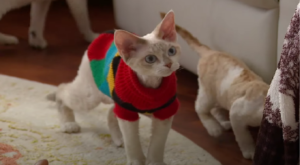
This combination makes the Devon Rex look like royalty – just make sure you keep those claws trimmed! [1]
Ragdoll
Ragdolls are renowned for their calm and gentle nature, as well as their soft, plush coats.
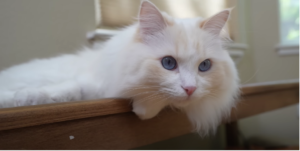
They’re also known for having large frames with small heads – this makes them look like living teddy bears! These cats are very friendly and make excellent companions for families of all sizes.
American Bobtail
This medium-sized feline has a short, stubby tail and a broad, round head. American Bobtails are surprisingly muscular cats; they have big bodies that make them look like miniature panthers! Plus, their friendly demeanour makes them great companions for both children and adults.
Persian Cats
Persians are the definition of luxury, with their long and voluminous coats. But they’re also known for having big bodies and small heads – this makes them look like furry little balls! These cats have gentle dispositions and make great lapcats.
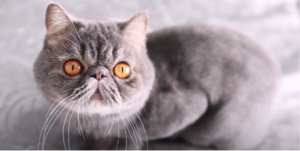
American Curl
American Curls have beautiful, long coats that can come in a variety of colours and. They also have distinctive curled ears and pet faces – this makes them look like living teddy bears! These cats are very affectionate and make excellent companions for families of all sizes.
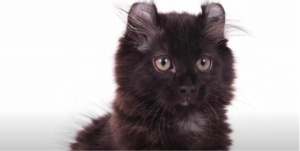
Sphynx Cat
Synx cats are famous for their unique, hairless look. Despite their lack of fur, these kitties have large bodies and petite heads – this makes them look like little aliens! Plus, they’re very friendly and make great companions for both children and adults. [1]
Cornish Rex
Cornish Rex cats have short, wispy coats and large ears which make them look like little foxes.
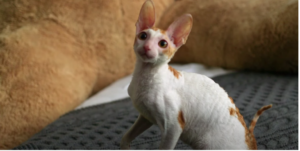
But what sets them apart is their big bodies and small heads – this combination makes them look like living teddy bears! These kitties are very playful and make excellent companions for families of all sizes.
Siamese cat
Siamese cats are known for their sleek, slim bodies and large ears. But they also have small heads – this makes them look like little lions! Siamese cats are very vocal and make excellent companions for both children and adults.
Singapura Cat
Singapura cats are known for their short, sleek coats and huge eyes. But they also have small heads – this makes them look like little owls! These kitties are very friendly and make great companions for families of all sizes.
Do Female Cats Have Smaller Heads?
Generally speaking, there are some breeds of cats that tend to have smaller heads than others such as Devon Rexes, Ragdolls and American Bobtails.
But this is simply due to the genetics of those breeds – female cats in these breeds will have just as small of heads as the males.
Do Ragdoll Heads Have Small Heads?
Yes, Ragdoll cats are known for having large bodies and small heads. This makes them look like living teddy bears! They also have long, plush coats which come in a variety of colours. These gentle giants make excellent companions for families of all sizes.
Do Intact Male Cats Have Bigger Heads?
No, intact male cats do not have bigger heads than neutered or spayed cats. The size of a cat’s head is determined by its breed and genetics, not whether it is intact or not.
[2]Will My Cat Head Grow Bigger?
If your cat is a certain breed that tends to have larger heads (e.g. Persian cats), then it may appear to be growing in size as the cat matures; however, this is not due to the cat’s age but rather its breed and genetics.
FAQ
What breed of cats have small faces?
A number of cat breeds have small faces, including Devon Rexes, Ragdolls and American Bobtails.
Do male cats have bigger heads than female cats?
No, male and female cats do not generally differ in head size. The size of a cat’s head is determined by its breed and genetics, not its gender.
Are there cats with small heads and big bodies?
Yes, there are a number of cat breeds that have small heads and big bodies, such as American Curls, Sphynx Cats, Cornish Rexes, Siamese cats and Singapura cats. These kitties tend to make great lapcats.
What breed of cats have large heads and small bodies?
There are several breeds of cats that have large heads and small bodies, such as Persians, Himalayans and British Shorthairs. These kitties tend to be very affectionate and make excellent companions for families of all sizes.
Do Persian cats have small heads?
No, Persian cats generally have larger heads than other breeds. However, they still have relatively small heads compared to their large bodies. These furry felines make wonderful companions for both children and adults.
What breed of cat has big ears and a small head?
Siamese cats are known for their large ears and small heads. These vocal kitties make excellent companions for both children and adults.
Do Ragdoll cats have small heads?
Yes, Ragdoll cats are known for having large bodies and small heads. These gentle giants make great companions for families of all sizes.
What should I look for in a cat with a small head and big body?
When looking for a cat with a small head and big body, it is important to make sure the kitty is healthy. Check for signs of fleas or ticks, as well as any dental issues (such as malocclusion).
Additionally, check that your chosen furball is up-to-date with all of their vaccinations and parasite preventatives. Finally, observe the cat’s behaviour to ensure it is friendly and well socialised.
What other breeds of cats have small heads?
In addition to Devon Rexes, Ragdolls and American Bobtails, there are a number of other breeds that have smaller heads than average. These include Cornish Rexes, Siamese Cats, Singapura Cats, Japanese Bobtails and Himalayans. All of these kitties make excellent feline friends!
What is the best type of cat for families with small children?
The best type of cat for families with small children is one that is gentle and easy-going. Look for a breed that is known to be particularly people-orientated, such as Ragdolls or British Shorthairs.
These kitties are usually patient and tolerant of being handled, which makes them especially suitable for families with young children. Additionally, look for a cat that has a small head and big body, as this will help to avoid any accidental injuries.
How can I make sure my cat stays healthy?
To keep your cat healthy, ensure that it is up-to-date with all of its vaccinations and parasite preventatives. Additionally, provide a balanced diet that meets the nutritional needs of your particular breed; this will help to avoid any vitamin or mineral deficiencies. Finally, groom your cat regularly to remove any dead hair and prevent matting. Regular grooming will also help to identify any potential health issues early on, such as parasites or skin conditions.
How can I keep my cat entertained?
Cats need plenty of mental and physical stimulation to stay happy and healthy. Make sure your kitty has access to a range of toys, such as scratching posts and interactive toys. Additionally, provide your furball with plenty of places to climb, explore and hide.
Ensure that there are no potential hazards in the vicinity, such as exposed wires or chemicals. Finally, spend quality time with your cat every day; this could range from cuddle sessions to simple playtime.
How can I keep my cat safe?
One of the most important things you can do to keep your cat safe is to ensure that it does not roam outdoors. Indoor cats live longer and are less likely to suffer from illnesses or injuries.
Additionally, make sure that all windows, doors and other potential exits are securely shut and screened; this will help to prevent your kitty from escaping.
Finally, make sure that potential hazards in the home are removed, such as exposed wires or chemicals. By following these simple steps, you can keep your cat safe and sound!
Why is it important to choose a breed with a small head?
It is important to choose a breed with a small head in order to avoid any potential injuries. Cats with large heads may be more prone to suffering from neck and shoulder injuries, especially if they are handled roughly or engage in rough play.
Additionally, cats with smaller heads can fit into smaller spaces, making them more suitable for smaller homes or apartments. Finally, some cats with small heads tend to be calmer and easier to handle, making them better suited for families with young children.
Why is it important to observe a cat’s behaviour before adoption?
It is important to observe a cat’s behaviour before adoption in order to ensure that the kitty is friendly and socialised. Cats with undesirable behaviours, such as aggression or fearfulness, may not make the best pet.
Additionally, observing your potential furball beforehand can help you determine if its personality and energy level is compatible with your lifestyle. Finally, observing a cat’s behaviour before adoption will help ensure that the kitty is healthy and free from any medical issues.
Does size matter when choosing a cat breed?
Size does matter when choosing a cat breed, as larger breeds may be more suitable for families with young children than smaller ones.
Additionally, some large cats are more active and energetic than others, which can help to keep them entertained and mentally stimulated.
Finally, certain small cats may require special care if they have a large head and small body, as they may be more prone to suffering from neck injuries.
Do all cats need the same amount of care?
No, all cats do not require the same amount of care. Some breeds are more high-maintenance than others and may need daily grooming, regular medical checkups and a specialised diet.
Additionally, some cats may require more exercise or mental stimulation than others to stay happy and healthy.
Finally, certain breeds may be more sensitive to temperature changes or medication, so it is important to research the breed before making a decision.
Does spaying or neutering a cat have any benefits?
Yes, spaying or neutering a cat has numerous benefits. It helps to reduce the risk of certain medical issues, such as cancer and infection.
Additionally, it can help to decrease aggressive behaviours and roaming tendencies. Finally, spaying or neutering a pet can help to prevent overpopulation and improve the overall quality of life for cats.
What is the best way to bond with your cat?
The best way to bond with your cat is to spend quality time together every day. This could include cuddle sessions, brushing its fur or simply playing games that involve chasing a toy mouse or laser pointer.
Additionally, providing positive reinforcement when your kitty does something good can help to build trust and strengthen the bond. Finally, talking to your cat in a soothing voice and offering treats can also help it to feel comfortable around you.
Do cats need regular veterinary care?
Yes, cats do need regular veterinary care in order to stay healthy and happy. Vaccinations, deworming treatments and other preventative care are important for all cats.
Additionally, it is important to keep up with any necessary medical treatments or surgeries that may be needed. Finally, having a yearly checkup will help to ensure that your cat is in good health and free from any medical issues.
Does my cat need to be protected from the cold?
Yes, cats should be protected from the cold as they are sensitive to temperature changes.
Providing a warm and cosy place for your kitty to sleep during cooler months is important for keeping it comfortable. Additionally, providing a coat or sweater can help keep your cat warm when outside in colder temperatures.
Does my cat need to be protected from the heat?
Yes, cats should also be protected from the heat. This can include keeping them indoors during warmer months and providing access to cooler areas of the house.
Additionally, providing plenty of fresh water and a source of shade outdoors can help keep your cat cool in hot weather. Finally, it is important to watch for signs of heat exhaustion, such as painting, drooling or lethargy.
Do cats need grooming?
Yes, cats do require regular grooming to stay healthy and looking their best. Brushing their fur on a regular basis can help to reduce tangles and mats, as well as minimise shedding.
Additionally, trimming nails and cleaning ears can help to keep your cat’s coat in good condition. Finally, it is important to keep your cat’s teeth clean in order to prevent dental problems.
Does my cat need mental stimulation?
Yes, cats need mental stimulation in order to stay happy and healthy. Playing interactive games with your kitty can help keep it active and mentally engaged.
Additionally, providing toys or scratching posts can also provide enrichment for your pet. Finally, allowing your cat to explore new places or engage in hunting behaviours can also be beneficial.
What kind of food should I feed my cat?
The best type of food to feed a cat depends on its age, size and activity level. Generally speaking, cats require a diet high in protein and fat with minimal carbohydrates.
Additionally, wet food or raw diets may be recommended for certain cats to ensure that they are getting all of the necessary nutrients. Finally, it is important to consult with a vet or nutritionist for specific dietary needs.
Which cat breeds have small heads and big bodies?
Some examples of cat breeds with small heads and big bodies include the Maine Coon, Persian, Ragdoll, Birman and Himalayan. Additionally, some mixed-breed cats may also possess these traits. It is important to note that size can vary among individual cats of the same breed.
Which cat breeds are the most affectionate?
The most affectionate cats tend to be those with a gentle, relaxed temperament. Breeds such as the Ragdoll and Persian have been known to be very loving and loyal companions.
Additionally, many mixed-breed cats can also have very sweet personalities. Ultimately, it is important to remember that each individual cat will have its own unique personality.
Can cats with small heads and big bodies live long lives?
Yes, cats of any size can potentially live a long life provided that they receive proper care. Keeping up with regular veterinary checkups, providing a healthy diet and plenty of mental stimulation are all important for giving your pet the best chance at a long, happy life.
Additionally, some breeds such as the Maine Coon are known to have a longer lifespan than other breeds.
Can cats with small heads and big bodies live indoors?
Yes, cats of any size can generally adapt to an indoor lifestyle provided that they receive plenty of physical and mental stimulation.
Providing scratching posts, interactive toys, windows to watch birds and other enrichment activities will help keep your kitty happy while inside.
Additionally, managing litter box odour and cleanliness is also important for creating a comfortable indoor environment.
Useful Video: 🐈 All Cat Breeds A-Z With Pictures! (all 98 breeds in the world)
Conclusion
From the odd-looking British Shorthair to the Instagram-famous Scottish Fold, cats with a small head and big body are not as uncommon as some may think. Most of these breeds have a genetic mutation that contributes to their unique look, so it’s important to research breeders before getting one.
They usually require extra care and patience due to their special needs, but they can be great snuggle buddies when properly cared for! While these cats may not fit the traditional view of beauty, they definitely bring character and charm into any home.
After all, cats like this deserve just as much love and attention as any of their more traditionally designed counterparts! And with that said, we hope you now have a better understanding of the different cat breeds with small heads and big bodies.
References:
- https://kittydevotees.com/2021/10/18/8-cats-with-small-heads-and-big-bodies/
- https://petsbeam.com/cats-with-small-heads/

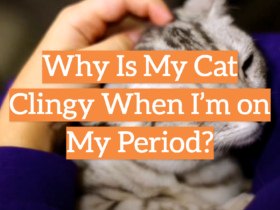
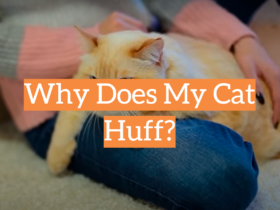
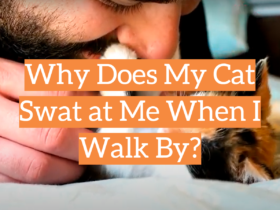
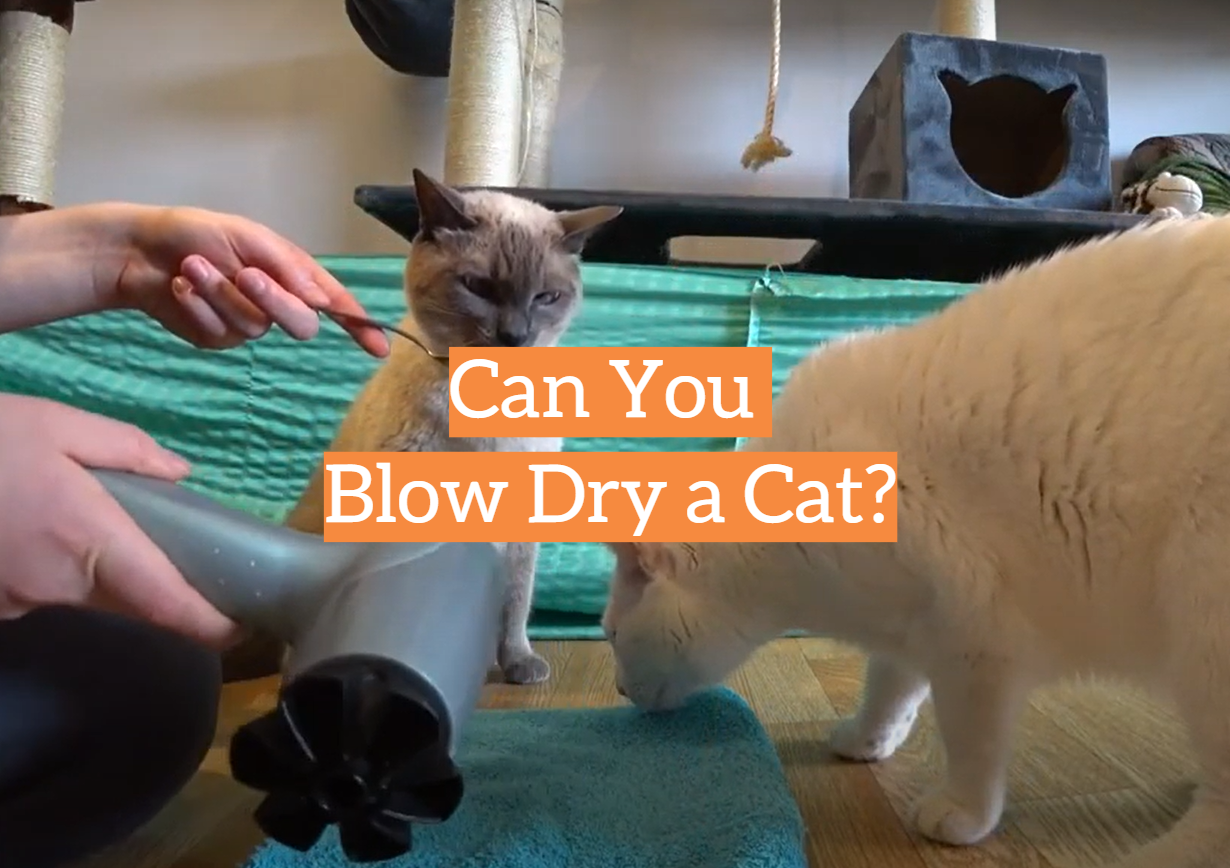
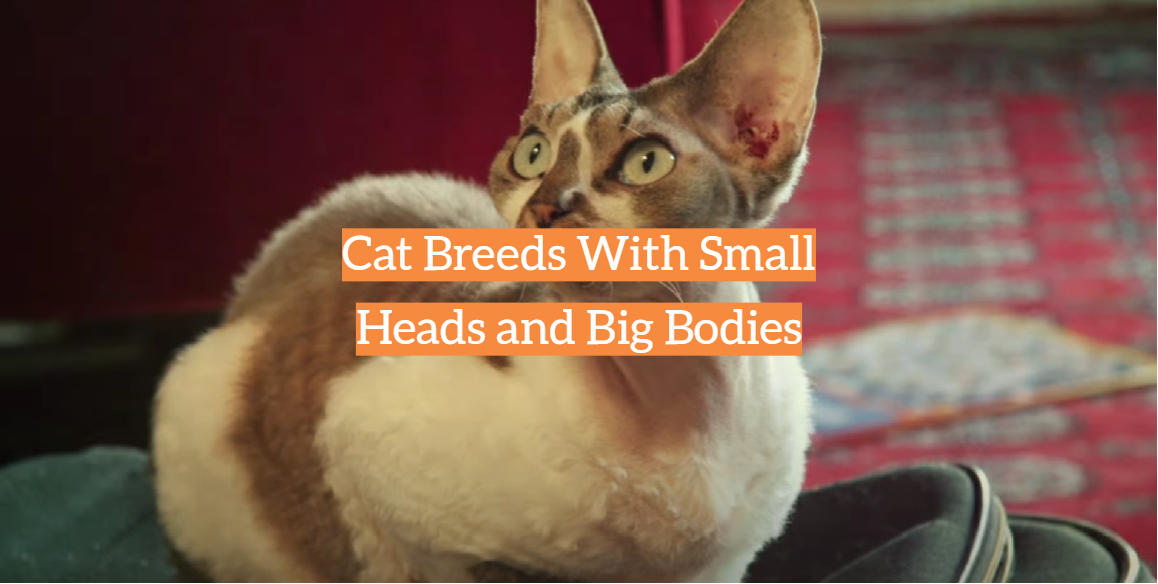
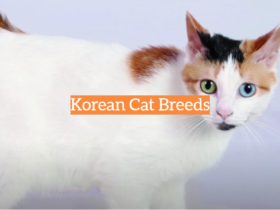
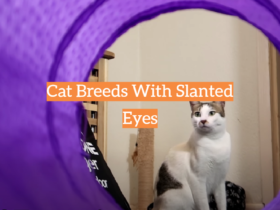
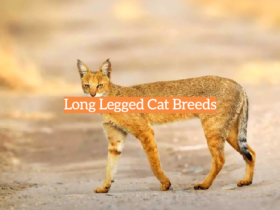
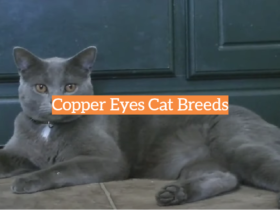
Leave a Reply